Flex Seal is a popular sealant that is commonly applied on cracks and crevices to prevent leaks. This product is meant to adhere to any surface, but it does leave behind a sticky residue that can be difficult to remove from your hands. We have researched ways to easily get this substance off of your skin.
You can try the following methods if Flex Seal comes into contact with your skin:
- Wipe the affected area with a soft rag or paper towel.
- Wash with soap and water.
- Use steel wool to remove stubborn residue.
- Apply acetone.
- Apply a commercial product.
It's common for people to try to remove Flex Seal from the skin by rubbing it with paint thinner, but this can irritate the skin. Read on to learn how to properly remove Flex Seal from the skin without damage or irritation.
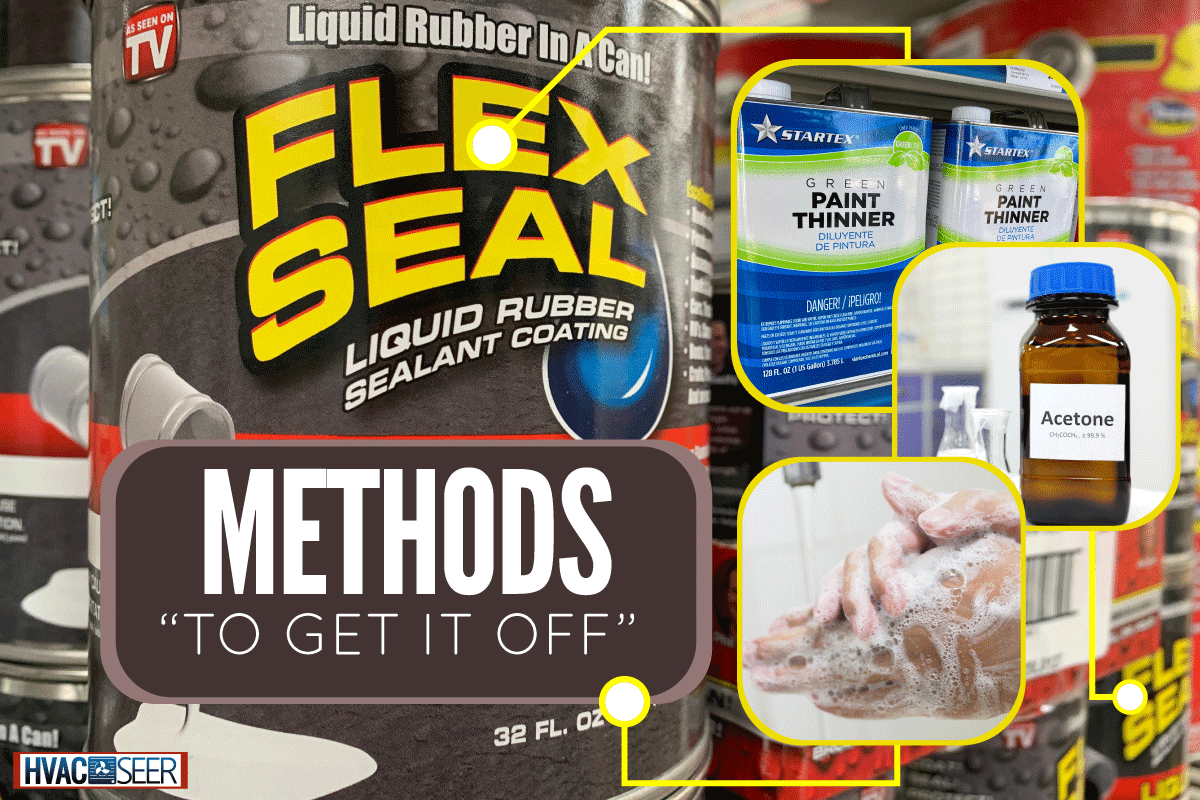
Simple Steps to Follow to Remove Flex Seal from Skin
Flex Seal is a great product until it gets on your hands. Here are some steps to follow to safely remove Flex Seal from your skin:
1. Wipe the Affected Area
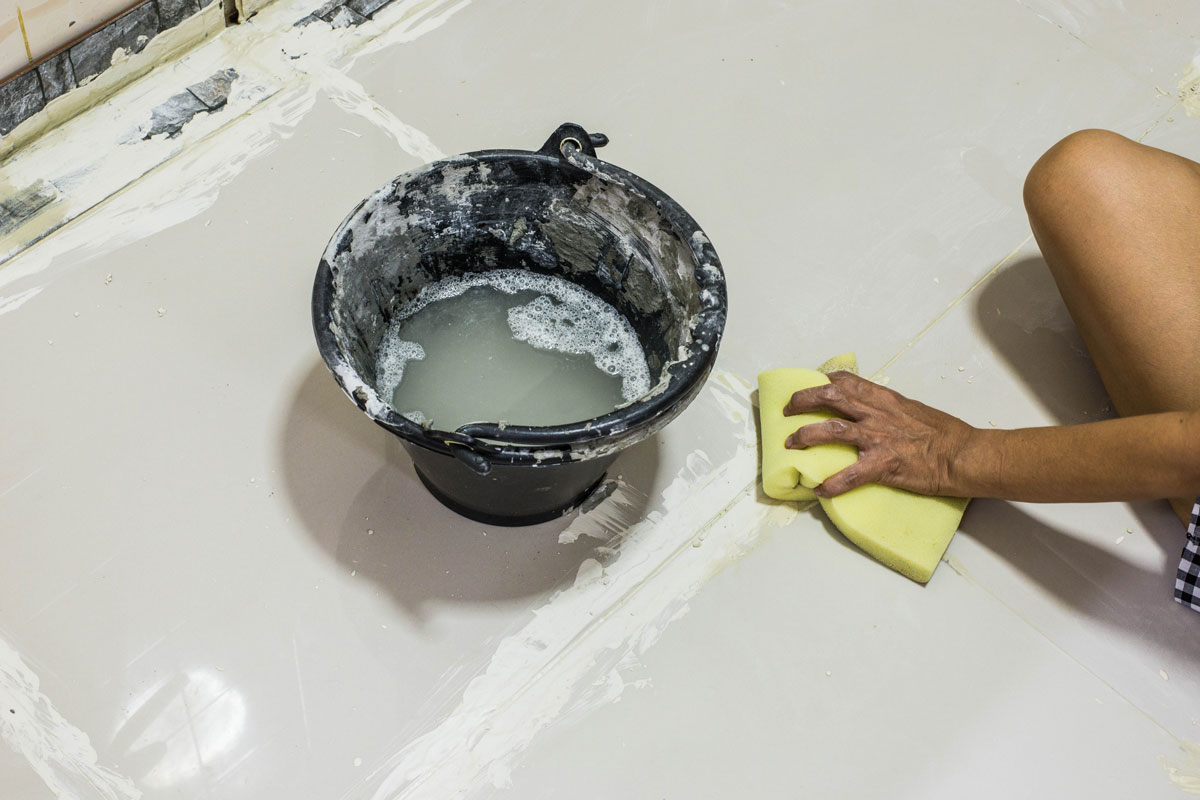
If the sealant is still fresh, you can simply wipe the affected area with a soft rag or paper towel. You don't need to use a lot of pressure.
Just make sure to use enough pressure to clean the area. You may skip this step if the sealant is already dry on the skin.
2. Wash with Soap and Warm Water
Nothing beats the traditional soap and water solution to remove any type of residue. Use soap and warm water and rub the affected area for at least 5 minutes.
It will take some time to get the Flex Seal out of your skin, but you will eventually see it come out as long the sealant hasn't been left to dry out.
3. Use Steel Wool
Steel wool that is usually used to clean pots in the kitchen is perfect for removing Flex Seal from the skin. You can use it to scrub the affected area until you see the Flex Seal start to come out.
The grit on the steel wool should be rough enough to remove the residue but fine enough not to scratch the skin. Be careful not to apply too much pressure because it might hurt.
4. Apply Acetone
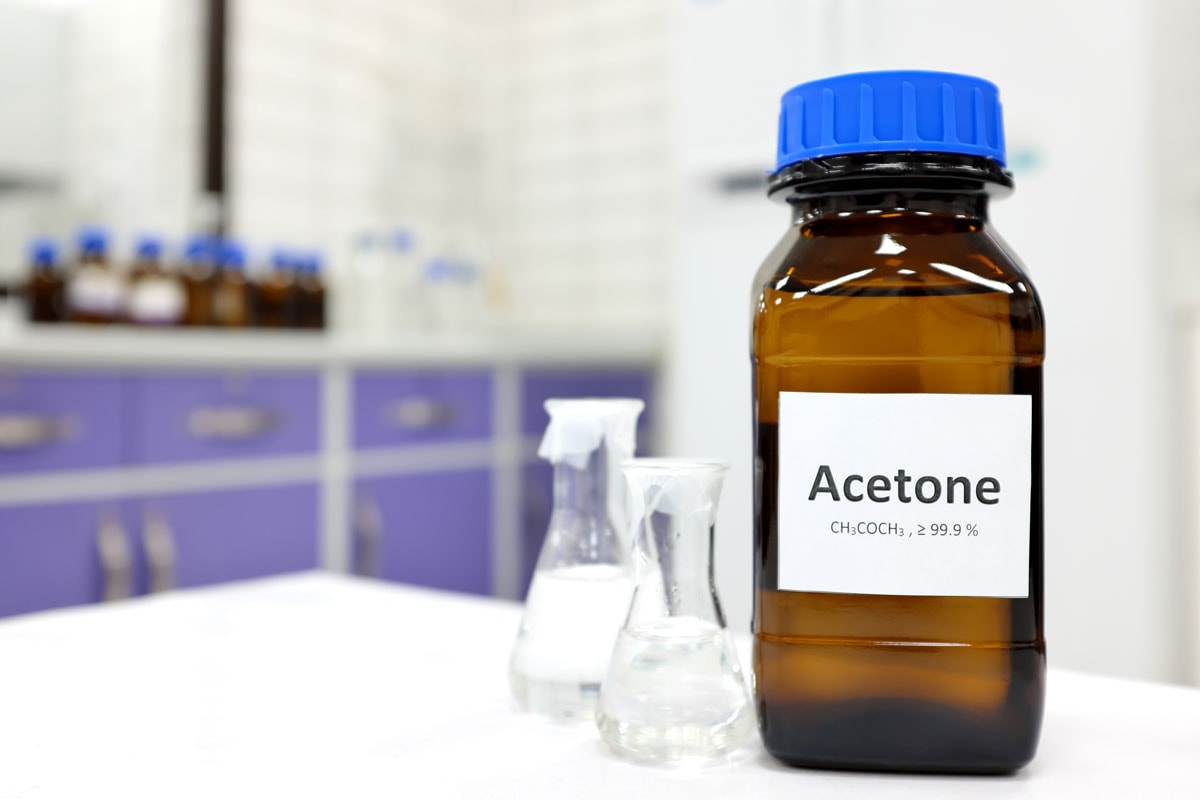
Acetone can be effective in removing dried Flex Seal residue. It contains properties that eat up rubber and other plastics. Get a soft cloth or cotton and soak it in acetone. Then gently rub the affected area until you see the Flex Seal start to come out.
5. Use a Commercial Product
You can use a commercial product to remove Flex Seal from the skin if none of the above methods work. These commercial products are specially designed to remove liquid rubber residue from your skin.
Make sure you read the label first to ensure that the product you are using is safe for your skin.
Watch this video to see how to get Flex Seal off your hands by washing it:
Why Is It Hard for Flex Seal to Come Off?
Flex Seal is made of liquid rubber that is extremely resilient but tough. The resin has a high molecular weight that makes it very resistant to moisture and solvents.
Liquid rubber is basically an elastomer of styrene-butadiene rubber. The mixture is heated until it liquefies. The mixture is then applied to the crack or crevice where you want to seal.
Liquid rubber, once it gets in contact with skin, forms a tough, sticky substance that can be very difficult to remove. The sticky residue is caused by the resin curing and forming a tough bond with the skin.
The adhesive will cure if left at room temperature and can form a tough bond between the substrate and the sealant.
Is Flex Seal Toxic to the Skin?
Flex Seal is toxic to the skin if it hasn't dried yet. The liquid rubber can enter your system through your skin pores and may cause irritation. However, it doesn't have to dry before you remove it.
It's best to remove Flex Seal as soon as possible after immediate contact. If you wait too long, the liquid will harden and become more difficult to remove.
The State of California has issued a public safety warning on prolonged exposure to Flex Seal, as it may cause cancer and certain birth defects.

Does Flex Seal Wear Off Naturally If Left On Its Own?
Interesting question, but not a good idea. You don't want to be shaking hands or giving high fives with your friends with Flex Seal on your hands. Flex Seal will wear off on its own, but it will take time.
Common Remedies to Remove Flex Seal from Skin
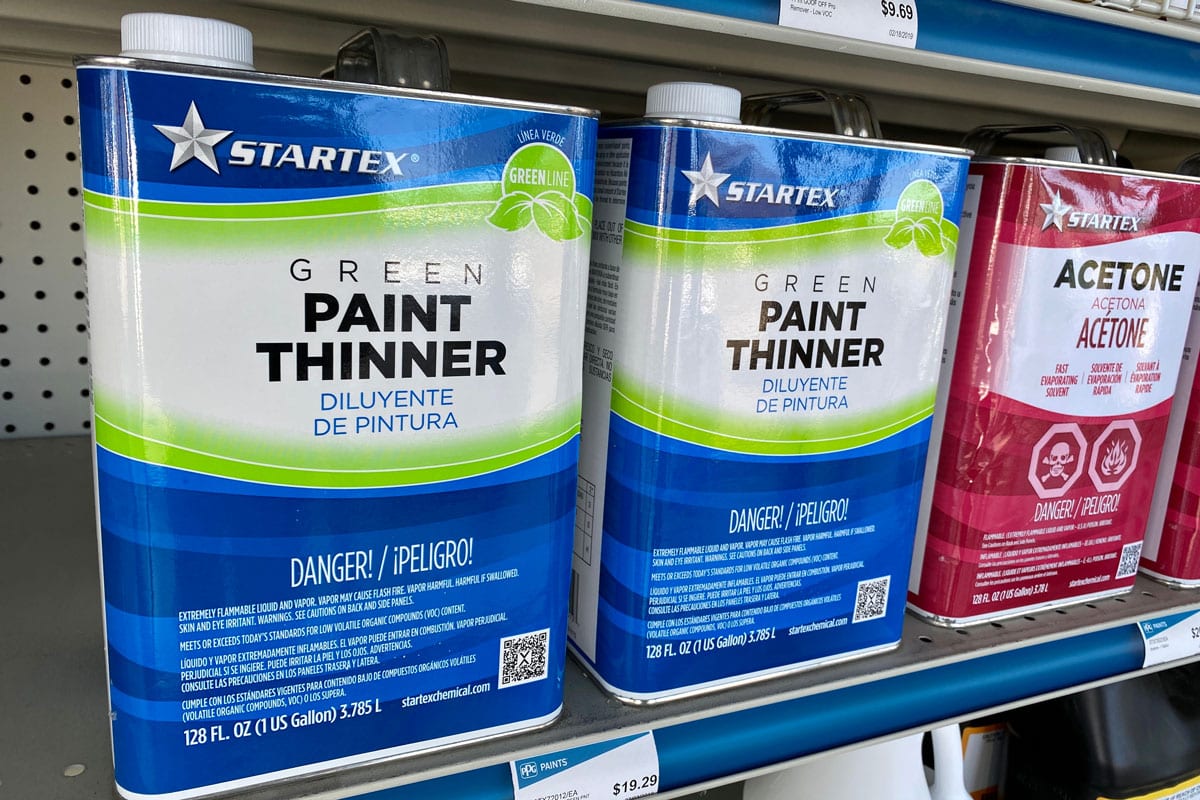
One of the most common go-to remedies, whenever Flex Seal gets stuck to the skin, is to use a paint thinner. However, using a paint thinner can cause irritation and damage the skin. It is also highly flammable and should be handled with care.
As a matter of fact, paint thinners can cause more than just skin irritation. They have been found to be carcinogenic (cancer-causing) when exposed for longer periods and should not be used in any home without adequate precautions.
You don't have Flex Seal on your skin every day, so it should be a cause of concern to have paint thinner on your skin once in a while. However, if your skin is sensitive to paint thinners, you might run the risk of allergic reactions and minor burns.
Alternatively, isopropyl alcohol is a safer solvent and will break down the resin in Flex Seal. However, isopropyl alcohol is only effective if the sealant hasn't dried up yet.
Top 3 Commercial Products to Help You Get Flex Seal Off Your Skin Easily
Wouldn't it be great to have something you can grab immediately and use whenever your skin comes into contact with Flex Seal? That way, you won't have to interrupt your work to go wash your hands with soap and water. This can save you valuable time.
Here are the top three commercial products that can easily get Flex Seal off of your hands:
1. Big Wipes Heavy Duty Hand Wipes
As DIYers, we don't usually think about how much dirt is on our hands once we are busy and have set our minds on something. That's why there are so many different kinds of hand wipes on the market.
Some are meant to be used for one specific purpose, while others are multifunctional.
Big Wipes heavy-duty hand wipes have a grip that makes them perfect for wiping dirty hands. And because they are so heavy-duty, they can remove all the sticky stuff that can stick on your skin, even the most stubborn Flex Seal.
In addition, each Big Wipes hand wipe is able to remove 40% of the dirt upon contact. It doesn't get any better than that.
Click here to see these hand wipes on Amazon
2. Venom Steel Hand Wipes with Scrubbing Beads
Venom Steel hand wipes are hypoallergenic wipes. Made with a tough cloth that's 50% thicker than leading brands, these wipes work for even the toughest jobs. They are gentle enough for use on sensitive skin and have a light citrus scent that is pleasant to the nose.
In addition, Venom Steel hand wipes have a double-cleaning action that leaves hands clean and sanitized.
Click here to see these hand wipes on Amazon
3. Full Bore Power Hand Scrub
Solvents and chemicals are toxic to our bodies. This Full Bore power hand scrub is all-natural, hypoallergenic, and has no harmful ingredients. Instead, it contains minerals for exfoliation and moisturizes your skin.
It has a neutral pH formulation, meaning it won’t burn your skin and won’t irritate sensitive skin, even if you have cuts or abrasions from work.
Full Bore works quickly to remove dirt and debris from your hands without stripping natural oils away. It is suitable for all skin types.
Click here to see this hand scrub on Amazon
In Closing
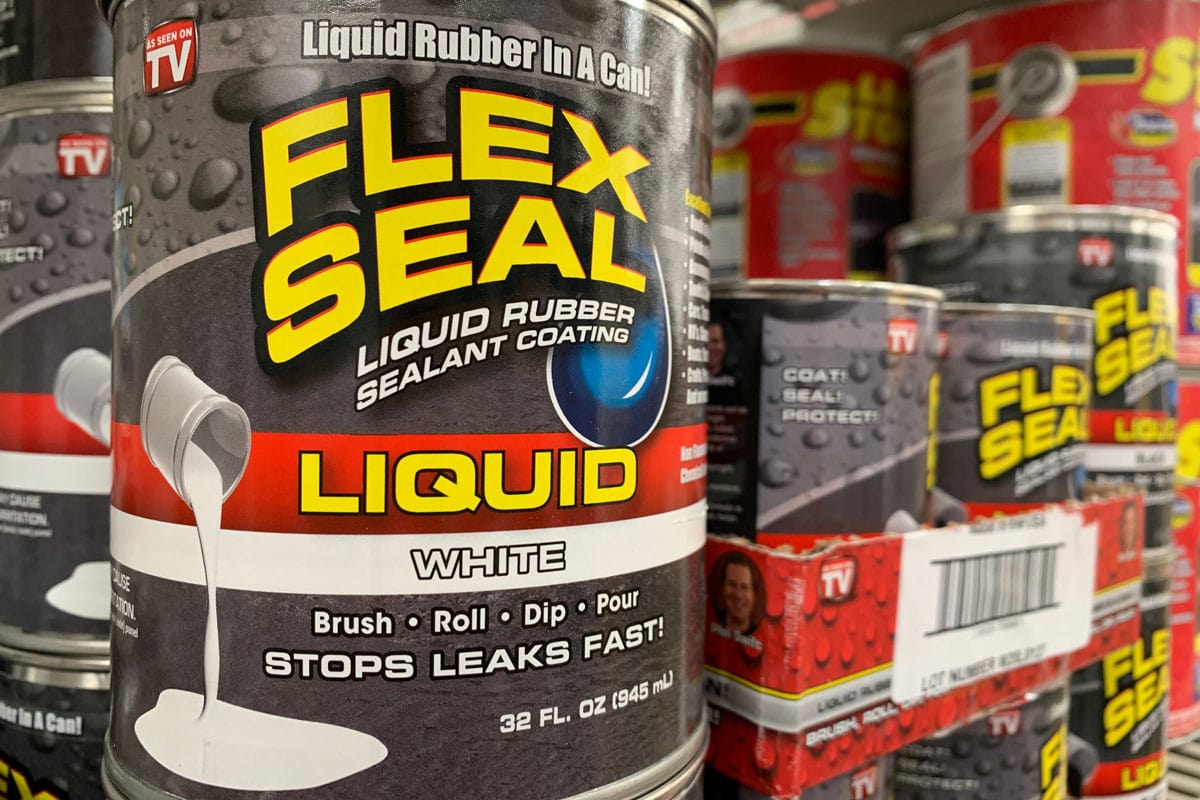
Removing Flex Seal from the skin is a fairly easy process. Just make sure you follow the methods discussed here and don't miss any of the areas of your skin as you scrub it free. Once you've got the stubborn sealant off of the skin, don't forget to double-check your hands for traces of it.
You might also be interested in these articles:
What Is The Best Sealant For Basement Walls? [3 Great Options Explored]



